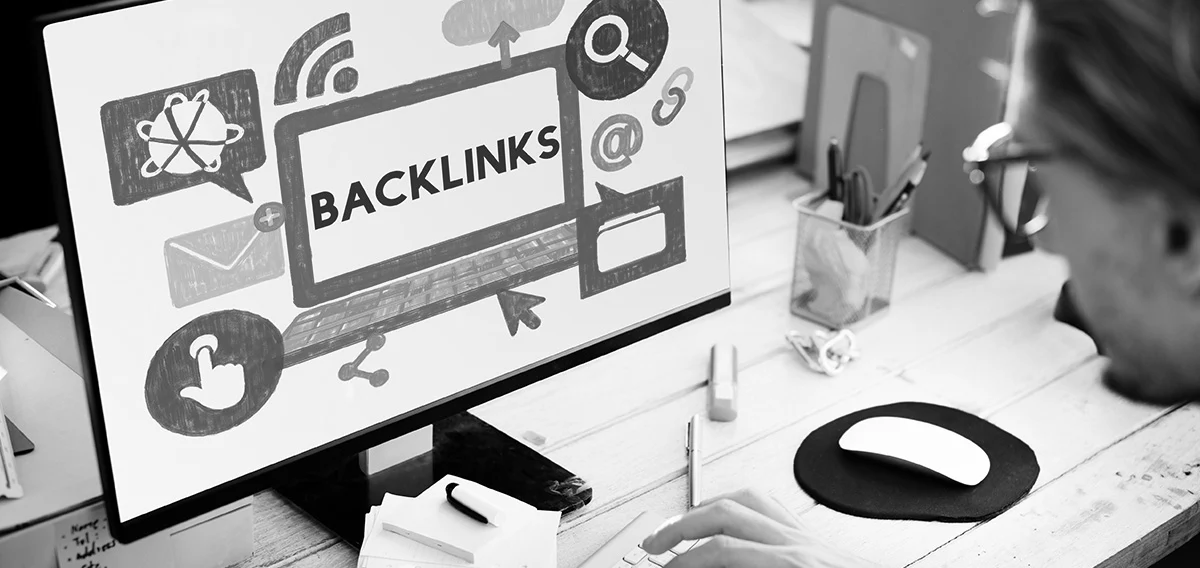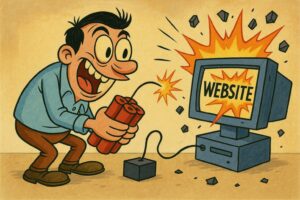Do you want to know the best way to clean up your backlink profile for better SEO results? If so, then this blog post is perfect for you. We will discuss how to identify bad links and remove them from your link profile, as well as what tasks need to be done if a site has been penalized by Google. These are all things that every business owner should know when it comes to search engine optimization.
First, Audit the backlinks you have.
This will identify bad links in your backlink profile. For example, if you have a link on your site that leads to an error page or does not lead anywhere at all, then this is considered a negative link and needs to be removed for better SEO performance.
There are many different tools that will help you identify bad links on your site. One of the most popular is Majestic SEO, but there are other options out there if you prefer. When using a tool like this to find negative links in your backlink profile:
-Go through and select every URL that leads to an error page or does not lead anywhere at all
-Select them for deletion so they don’t negatively impact your link profile any more than it already has been
This process should be repeated until all sites with poor backlinks have been identified and removed from the link profile. Remember, these tasks need to be completed as soon as possible because Google’s algorithm can penalize websites if too much spammy content is detected.
Next, if your site has been penalized by Google or is currently being targeted for a spammy link-building campaign, it’s important to remove the backlinks that were built as part of this process.
For example: If you’re just getting out of an algorithmic penalty from Google and only have a few links left on your website, then these are considered “good” links because they haven’t yet been detected by Google algorithms as having malicious intent. This means that keeping them in place will help get your site off of their blacklist and rank again organically without any penalties applied. Keep in mind though–this doesn’t mean you should add more bad links to try and fool the algorithm!
How to remove bad backlinks to benefit your SEO: Contact the site that’s linking to your website.
Reach out and let them know about their link, & ask for it to be removed. Be polite when contacting these sites–if they think you’re a bully then chances are they won’t comply with your request at all!
Occasionally, some of these site owners will demand payment in order to remove the link. You do not need to pay this. If this should happen, you can indicate to Google in your disavow document that an unreasonable payment arrangement was requested. Google does not expect website owners to pay in order to have links removed.
Next, update your disavow document.
This document is a Google-formatted list of all the URLs you want to disavow. These sites should be included in your disavow file if they have been identified as spammy and could potentially hurt future SEO performance.
What’s on this list? The following websites: negative backlinks, low-quality content sites with poor domains/IPs that are linking to your site for no reason at all, links from copyright infringing sources (images or videos), and more! When updating this document make sure to include only those URLs which need to be removed. Do not put any entire domain names into the disavow tool; instead, enter each individual URL one by one–this will help avoid including good pages along with bad ones.
Ongoing, It’s important to periodically update your disavow file when new bad links are added. This can be done by adding them in a document and submitting it through the Google Search Console–make sure you do this every time!
This is because if the site owner decides to remove their link, but forgets about updating their disavow file with all of these changes, then they could easily target other websites for malicious purposes again without being detected. The best way to avoid this from happening? Create an up-to-date document that lists all of the links that should no longer point at your website so there’s always something on hand if any issues arise (which is why it’s important).
Finally, if you’ve actually been issued a penalty by Google, you will need to file a reconsideration request with Google.
This is a form that you will need to fill out, and then submit it for the Google team to review. They will check your site’s on-page SEO performance (quality of content), external links, crawlability/accessibility issues, etc., in order to determine if they would like to reconsider what penalty has been issued–this can be done after any type of algorithmic or manual action has taken place!
If the penalty was applied as part of an algorithm update from Google (such as Penguin) then this works more quickly than if it was through another process; however, make sure that you’ve followed all other guidelines laid out above before requesting a reconsideration because these could have contributed towards getting penalized in the first place.
Regardless if you’ve been issued a manual penalty or not, cleaning up your backlink profile is an important part of every SEO Audit process. Google has definitely changed the rules over the past few years, so it’s important to make sure you keep up with their changes and stay in their good graces.










